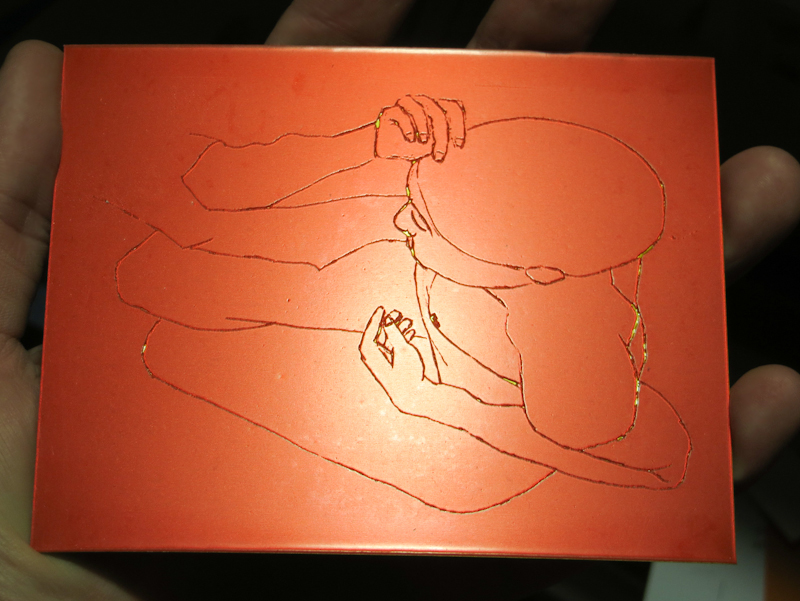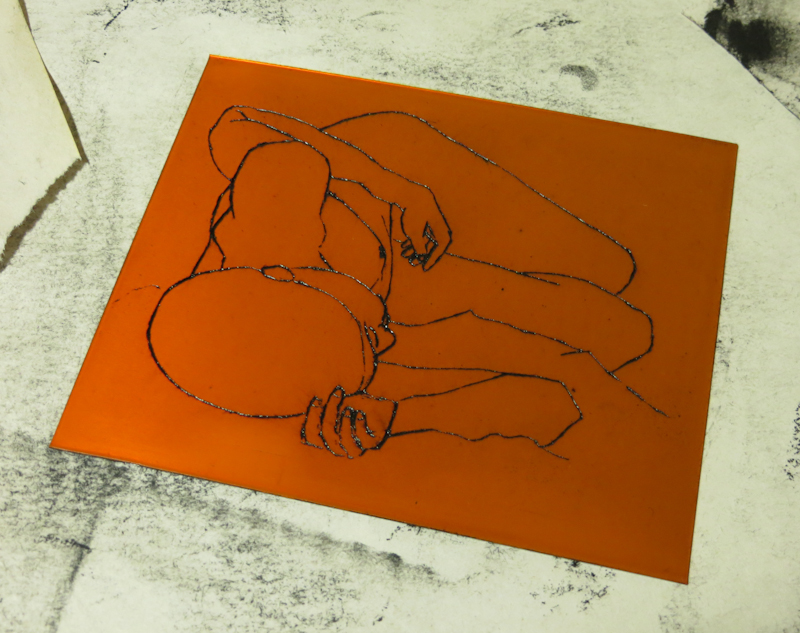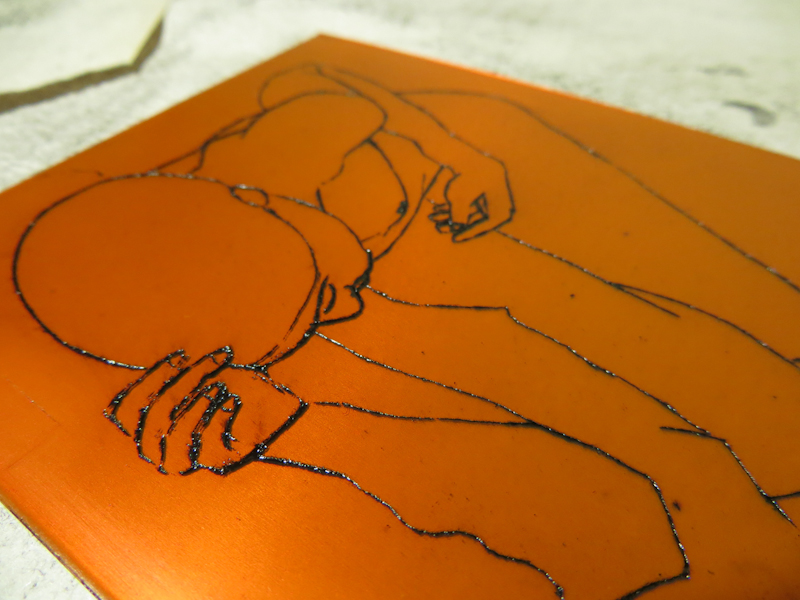I just made an intaglio print based on one of my favorite line drawings. The original charcoal drawing is from my time in Geoff Flack’s Foundation Figure Drawing course back in 2010. I made the plate last night from a piece of SolarPlate. The results were decent for a first attempt, but I think in the end I failed to capture the subtlety of the line drawing. My next attempt will be an aquatint, which hopefully will more accurately reproduce the softness in the charcoal lines.

This photopolymer plate works like a classical etching in copper, where the grooves hold the ink and the smooth surface is wiped clean. I’m concerned that I will get open bite in the shoulder area because the lines are too wide. Open bite happens when the groove is so wide that the capillary forces in the ink are unable to hold the ink in place as the plate is wiped. I’m still investigating why the lines in the shoulder are so thick. It could be the original artwork, or I may have over developed the plate.

The first step in printing intaglio is to apply ink to the plate. I like to use a scrap of cardstock to help push the ink into all of the grooves.

Here I’m starting to wipe the plate with a piece of tarlatan (basically a piece of cheesecloth that has been heavily starched). The goal for this pass is to remove the heaviest ink deposits while grinding the ink into the lines.

After removing the bulk of the ink with the tarlatan, I switch to newsprint which removes surface ink while leaving the lines. The newsprint also tends to polish the smoother parts of the plate.

At this point, I’ve wiped with tarlatan, then newsprint. All that remains is to clean up any ink that has stuck to the edges of the plate.

Here’s a close up of the plate immediately before printing. I’m a bit concerned that the fingernails are holding too much ink.

Here’s the first print, on a scrap of damp Rising Stonehenge. As I suspected, there is some open bite in the lines of the shoulder, and the lines in the fingers are not as subtle as the original artwork. The grey rectangle is called plate tone and is created by the residual ink on the plate. Plate tone is one of the hallmarks of the intaglio process. In this test print, I over-wiped the bottom of the plate, leading to uneven plate tone.
